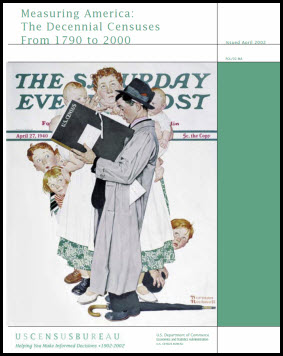Repeat: what the enumerators were told
After some questions that came up in a census presentation at last week’s opening session of the New York State Family History Conference in Tarrytown, The Legal Genealogist offers some questions in return:
• What’s an “inmate” on a United States census return?
• Who was listed as the “head of household”?
• What was a “housekeeper”?
• And why in the world isn’t the however-many-great-grandaunt born in May listed on the 1910 census?
This isn’t the first time I’ve posed these questions, and the answers to all of them have driven my research from time to time … and can sometimes drive us all batty.
But they don’t need to slow us down one bit.
Because — as first noted here some time back1 — there’s an easy way to get the answers to all of those questions and many many more.
Read the directions.
 In 2002, Jason Gauthier of the U.S. Census Bureau’s Economics and Statistics Administration produced one of the most singularly useful publications a genealogist can ever have in a toolkit. It’s available as a downloadable PDF file, directly from the U.S. Census Bureau website, and it’s called Measuring America: The Decennial Census from 1790 to 2000.2
In 2002, Jason Gauthier of the U.S. Census Bureau’s Economics and Statistics Administration produced one of the most singularly useful publications a genealogist can ever have in a toolkit. It’s available as a downloadable PDF file, directly from the U.S. Census Bureau website, and it’s called Measuring America: The Decennial Census from 1790 to 2000.2
What makes this 148-page document so valuable is that it sets out, in detail, exactly what the census takers were told to do for each and every U.S. census from the first census in 1790 all the way up to the census of 2000.
Sure, we all know that the enumerator might not have done what he was supposed to do — but knowing what it was that he was supposed to do is often a real help in understanding the records.
Reading the directions lets us know just what a term like “inmate” meant in the context of the census — because we can read the exact instructions that were given to the census takers. (And, by the way, those instructions changed between 1850 and 1870.)3
It tells us what a housekeeper was in the context of the census.4 And why “Indians not taxed” weren’t included in the enumerations.5 And even why that however-many-great-grandaunt didn’t make it onto the census in 1910. (She was born in May, remember… and the enumeration date was 1 April that year.)6
It’s a free download. You can read it with free PDF reading software.There are even free PDF-reader apps for tablets and phones.
So there’s no excuse.
Go do it.
Now.
Read the directions.
SOURCES
- Judy G. Russell, “Read the directions,” The Legal Genealogist, posted 23 Nov 2015 (https://www.legalgenealogist.com/blog : accessed 13 Sep 2018). ↩
- Jason G. Gauthier, Measuring America: The Decennial Census from 1790 to 2000 (Washington, D.C. : U.S. Department of Commerce, Economics and Statistics Administration, U.S. Census Bureau, 2002); PDF download, U.S. Census Bureau (https://www.census.gov/ : accessed 13 Sep 2018). ↩
- See Judy G. Russell, “Of inmates and families,” The Legal Genealogist, posted 19 Aug 2014 (https://www.legalgenealogist.com/blog : accessed 13 Sep 2018). ↩
- See ibid., “The other housekeeper,” The Legal Genealogist, posted 16 Jan 2015. ↩
- See ibid., “Indians not taxed,” The Legal Genealogist, posted 13 Mar 2015. ↩
- See Gauthier, Measuring America: The Decennial Census from 1790 to 2000, PDF at 112. ↩



Downloaded and skimmed – I can already think of a few situations that this will help me on! Thank you, Judy!
I’m male. It is against the code of our gender to read or ask for directions.
Humor aside…thank you for yet another valuable tool.
🙂
I’m sure the census takers padded their results. An ancestor that was dead for 19 years appeared on the 1900 census with his wife. At least I got some good information on him. Maybe his wife didn’t understand the question?
Some may have been deliberate and some may have been not understanding the question.
Thank you Judy for this awesome information on the census (and the fact that it’s FREE too is a happy plus!) What would we do without you keeping us straight on our research path? Most of us would be wandering around lost in genealogy land that’s what! 🙂 Thanks again for prompting us to READ the DIRECTIONS!